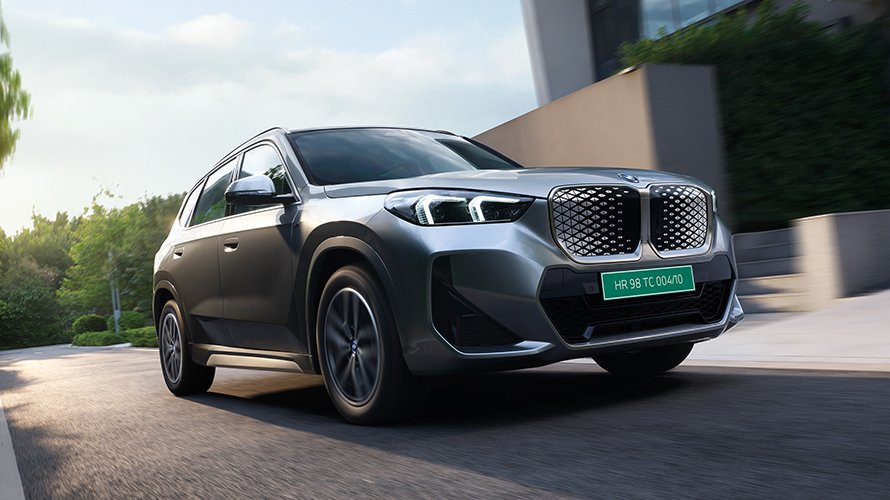The electric vehicle revolution in India is accelerating, and Kia is poised to make a significant entry into the mass-market EV space with the upcoming Syros EV. First spotted testing on Indian roads in late August 2025—just weeks after being seen charging overseas—the camouflaged prototype was captured at a charging station in Kochi, Kerala, parked alongside an MG Windsor EV. This marks the first time the Syros EV has been sighted on Indian soil, signaling that Kia is ramping up preparations for its launch. The internal combustion engine (ICE) version of the Syros was introduced in February 2025, and the EV variant appears to closely mirror its design, promising a seamless transition for buyers eyeing Kia’s electric lineup.
With deliveries of the ICE Syros already underway and over 15,000 units sold since launch, the EV model is expected to build on this momentum. Priced as Kia’s most affordable electric offering, the Syros EV is slated for a debut in early 2026, likely between January and March. It will slot below the Carens Clavis EV and compete directly with established rivals like the Tata Nexon EV and MG Windsor EV. Drawing from recent spy shots and industry reports, here’s a detailed look at what we know about the Syros EV, including its design, features, powertrain, and how it stacks up against the competition.
The Syros EV test mule, heavily camouflaged, retains the distinctive boxy silhouette and tallboy stance of the ICE Syros, which measures 3,995mm in length, 1,805mm in width, and 1,680mm in height, with a 2,550mm wheelbase. This sub-4m footprint ensures road tax benefits in states like Delhi, while the upright front fascia features vertical LED DRLs, thick B-pillars, roof rails, and body-colored ORVMs. The alloy wheels appear identical to those on the petrol version, and the rear showcases L-shaped taillights flanking the windscreen, with additional bumper-integrated lighting.
EV-specific changes are subtle but noticeable: a closed-off grille for aerodynamics, a charging port on the front left fender (as seen in earlier Korean spy shots), potential EV badging, and lime green brake calipers hinting at performance tweaks. The overall dimensions and shark-fin antenna remain unchanged, suggesting no major alterations to the K1 platform shared with the Hyundai Inster EV. This design philosophy maximizes interior space, with the ICE model’s 465L boot likely carried over, though a small frunk could be added for EV exclusivity.
The cabin of the Syros EV remains under wraps in current spy images, but it’s expected to replicate the ICE Syros’ layout, which draws inspiration from Kia’s premium EVs like the EV9. Key highlights include a 30-inch panoramic display (combining a 12.3-inch touchscreen, digital driver’s display, and 5-inch climate control screen), wireless Apple CarPlay/Android Auto, and a Harman Kardon 8-speaker system. Rear seats will likely offer segment-first sliding, reclining, and ventilation functions, enhancing comfort for families.
Safety and tech features mirror the ICE model: Level 2 ADAS (adaptive cruise control, lane-keep assist, blind-spot monitoring), a 360-degree camera, six airbags, electronic stability control, and a tyre pressure monitoring system. Additional EV-specific software for battery management and over-the-air updates via Kia Connect 2.0 (with 80+ connected features) are anticipated. Upholstery and trims may get eco-friendly tweaks, but expect ventilated front seats, a panoramic sunroof, and ambient lighting as standard in higher variants.
The Syros EV is expected to borrow its running gear from the Hyundai Inster EV and the related Carens Clavis EV, featuring a front-mounted electric motor with front-wheel drive. Battery options include a 42 kWh NMC (Nickel Manganese Cobalt) pack offering around 300 km (WLTP) range and a 49 kWh unit delivering up to 355-370 km. Some reports suggest a larger 51.4 kWh pack from the Creta Electric, potentially pushing the range to 473 km (ARAI-certified), though this remains unconfirmed.
Power output is estimated at 92-115 bhp with 147-200 Nm torque, enabling 0-100 km/h in about 10 seconds. Charging times: 10-80% in 30-58 minutes via DC fast charger, or 8-11 hours with a 7.2 kW AC wallbox. Real-world range could be 250-320 km depending on conditions, making it suitable for urban commutes and occasional highway runs. Kia promises an 8-year/1.6 lakh km battery warranty, aligning with industry standards.
Expected to launch in Q1 2026, the Syros EV will be Kia’s entry-level EV, undercutting the EV6 (Rs 29.68 lakh onwards). Pricing is projected at Rs 14-20 lakh (ex-showroom), with the base 42 kWh variant around Rs 14 lakh and the top 49/51.4 kWh at Rs 18-20 lakh. Government incentives under FAME-III could reduce effective costs by Rs 1-1.5 lakh. Combined with the Carens Clavis EV, Kia aims for 50,000-60,000 annual units.
The Syros EV enters a crowded segment dominated by the Tata Nexon EV (India’s top-selling EV with 85% market share) and the budget-friendly MG Windsor EV. It will also face the Mahindra XUV400 and upcoming models like the Maruti Fronx EV and Hyundai Venue EV. Here’s a quick comparison based on current data (prices ex-showroom, Delhi):
| Parameter | Kia Syros EV (Expected) | Tata Nexon EV (Empowered Plus LR) | MG Windsor EV (Essence) |
|---|---|---|---|
| Price | Rs 14-20 lakh | Rs 16.29 lakh | Rs 13.99 lakh (base Rs 9.99 lakh + BaaS) |
| Battery/Range | 42/49 kWh; 300-370 km | 40.5 kWh; 465 km (ARAI) | 38 kWh; 331 km (ARAI) |
| Power/Torque | 92-115 bhp/147-200 Nm | 142 bhp/215 Nm | 134 bhp/200 Nm |
| Dimensions (L/W/H) | 3,995/1,805/1,680 mm | 3,995/1,804/1,616 mm | 4,295/1,850/1,677 mm |
| Boot Space | 465 L | 350 L (+ frunk) | 604 L |
| Key Features | 30″ display, L2 ADAS, ventilated rear seats | 12.3″ touchscreen, JBL audio, V2L | 15.6″ touchscreen, reclining seats, panoramic roof |
| Charging (10-80%) | 30-58 min (DC) | 56 min (DC) | 45 min (DC) |
| Warranty | 8 yr/1.6L km battery | 8 yr/1.6L km battery | 8 yr/1.6L km battery |
Verdict: The Syros EV edges out in premium features and interior space, appealing to families seeking Kia reliability. The Nexon EV wins on range and established ecosystem (e.g., widespread charging support via Tata Power). The Windsor EV offers unbeatable value via BaaS but lags in range. For urban buyers, the Syros EV’s tallboy design and ADAS could tip the scales, especially with Kia’s 7-year vehicle warranty.



